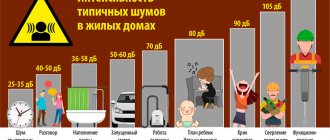In the SNiP 30-02-97 standards, you can read that the owners of country houses, gardening and vegetable gardening partnerships have the right to equip solid external (external) fences.
As for fences between adjacent areas, the installation of lattice structures is recommended. But there are exceptions: other types of fencing are acceptable by mutual agreement of the owners of neighboring plots. The development of individual housing construction territories is subject to regulation according to SP 30-102-99 using approximately the same standards.
According to the new law, there are a number of new rules between neighbors regarding the height of the fence, which should be followed in each individual case.
The purpose of installing the fence is to mark the boundary of the site, as well as to ensure the safety of those living on the site. Despite the apparent insignificance of the constructed fence, legislative standards were formed for it in the form of building codes and regulations (SNiP) and sanitary rules and regulations (SanPiN). Therefore, in the article we will consider the question of what the fence between neighbors in the private sector should be like.
Each owner of his plot of land wants to hide his personal life behind a high fence, so that not a single prying glance will disturb his individual space. That is why fences are erected around the entire perimeter of the plot. But in what situations is this permissible according to the standards, and when for installing a fence you can receive not only an impressive fine, but also an order to dismantle the fence? What is the permitted height of a fence between neighbors according to the law in 2021 and what should every developer know?
↑ What is the difference between the lands of TSN, SNT, individual housing construction, ONT, DNP
All lands of the Russian Federation, according to the Land Code, are divided into categories taking into account their intended purpose.
Federal Law of July 29, 2017 N 217-FZ
“On the conduct of gardening and vegetable gardening by citizens for their own needs and on amendments to certain legislative acts of the Russian Federation”
According to the Federal Law, land plots are divided according to the permitted method of use:
According to the new legislation, from January 1, 2019, TSN is a partnership of real estate owners.
Legislatively, the dimensions of the fence are standardized only for country, garden, vegetable plots, personal subsidiary plots of the partnership of owners with the category “Agricultural Land” and in the new edition of the building codes and regulations are designated solely as advisory.
Therefore, when erecting a fence between two neighboring areas, you need to focus on the standards that are prescribed in the charter of your TSN.
Although most of the provisions of the joint venture relate to recommendations, on their basis they draw up projects for residential developments and write the charters of country houses and gardening partnerships.
And the requirements of these documents are already mandatory for execution.
So if a fence is built between plots in a partnership, then you will also have to take into account the clauses of the SNT charter.
↑ Requirements for the fence
Changes have been made to the legislation related to the construction of fencing structures. According to the new rules, starting from January 2021, the height and transparency of the fencing structure are regulated by local authorities.
Their decision is based on the climatic conditions of the area and the topography of the area where residential buildings are built.
Therefore, each owner of an allotment, before erecting a fence between his own and his neighbor’s allotment, needs to visit the local government to find out the rules for erecting a fence. Or visit the local government website and ask a question online.
Regarding the fence itself.
The main purpose of the fence is to delimit neighboring plots.
And if the owner of the property prioritizes a fence as a means of ensuring personal safety, then according to the law he will be wrong.
If standards were violated during the construction of the fence, the owner of the neighboring plot has the right to write a complaint to local authorities or file a lawsuit in court.
It is important to take into account the fact that the fence must be located exactly between two plots. This boundary is determined by the development plan entered into the Unified Register. The boundary is drawn up along with the cadastral number. Therefore, if controversial issues arise, the development plan is the main document for resolving all disputes that relate to the construction of a fence.
But often the approved development plan leads to misunderstandings, quarrels and the filing of lawsuits.
The ideal option is to negotiate with the owner of the neighboring plot.
But if the conversation doesn’t work out, then you need to call a surveyor. According to the development plan, he will precisely lay out the boundaries of the plots.
Before building a fence (when the boundaries are 100% determined), you should contact the local department of urban planning and architecture (at the location of the future construction of the house/fence). You will have to obtain permission from a department specialist to build a fence.
Important! Without the received document, the fence will be invalid.
It is also worth knowing that, having applied for a permit, difficulties in obtaining it are quite possible. Local authorities may refuse if the plot has central sewerage, central water supply or electricity networks.
As for the building materials for erecting a fence, there are no restrictions in this regard. The owner of the site selects the material according to his preferences and financial capabilities.
The main thing when building a fence is the strength of the structure and an aesthetic appearance on both sides.
The requirement regarding the darkness of the neighboring plot must also be met.
Today the most popular materials for building a fence are:
- profiled flooring (profiled sheet);
- Rabitz;
- wood materials;
- brick or stone;
- profile metal products.
How to determine the size of the fence
There is an unspoken rule regarding the construction of fences. It lies in the fact that support pillars should be placed either on the border between plots or on the territory of the owner of the structures. It is strictly forbidden to install a fence on your neighbors' property. Because of this, a trial may begin in which the law will not be on the side of the violator.
Between areas that are designated for individual construction, the fence cannot exceed a height of one and a half to two meters. If the land owner wishes to build a fence above this standard, he will need to obtain permission from the responsible architect.
The same right also applies to cases where a fence is installed in the immediate vicinity of a highway. The height of the fence should not exceed 1 meter. If these rules are not followed, the owner of the site will not be able to obtain permission from the architect. There are restrictions on the height of the fence and in corner areas.
This is interesting: Change the status of a land plot to individual housing construction
Nuances for the private sector
For individual construction, there are the following rules for constructing fences:
- If fencing is being built in areas located on main highways, as well as in villages, the materials for it should be agreed upon with local authorities. But in practice, this point is almost never paid attention to. If all other standards are met, then there will be no problems with the construction of the fence.
- The height of the fence on the street side should not exceed two meters and twenty centimeters. This is due to ensuring normal lighting of streets and public places.
- Only safe materials should be used, in contact with which a random passer-by will not be able to prick or cut themselves. For example, on a section of fence near the sidewalk, you cannot use barbed wood and planed boards, which can cause splinters.
- If the fence is located at a distance of less than one and a half meters from the sidewalk, then the swing gates must open inward, since otherwise their opening may interfere with the normal movement of pedestrians.
The fence between neighboring plots also cannot exceed two meters.
There are also certain restrictions here:
- You can use a living fence - planting some plants (raspberries, bindweed, blackberries, etc.). But this can only be done after obtaining consent from the neighbors. The height of the plantings cannot exceed one and a half meters.
- It is recommended to install solid fences. Clearances in the fence should occupy at least 50 percent of the total space. You can use lattice, mesh or fences made of boards with gaps.
- A blind fence can be made only if consent is obtained from the neighbors. The height of such a fence cannot exceed 75 centimeters. Consent must be provided in writing. The document is kept by one of the neighbors - it can be used in case of disputes.
- A blind fence can be increased to two meters without additional permits. To do this, use translucent elements.
- If the thickness of the fence exceeds 5 centimeters, then without the consent of the neighbors it can only be built on the territory of one’s own plot. If the owner of the land wants to build it on the boundary, then consent from the neighbors will be required.
- A blind fence in a local area must be provided with running water. If the neighboring site floods due to lack of water passage, its owners will have every right to demolish the structure.
When erecting a fence yourself, you should also be guided by logic. If the fence constantly shades the windows of your neighbors, rattles steel sheets at night, or causes other inconveniences, then you will definitely need to expect justified complaints from them.
Rules for summer cottages
Gardening associations use different rules for planning fences.
The distance from the living space to the street remains the same, but there are other standards:
- fire safety distances between houses are not standardized;
- if there is single-row construction on neighboring plots, then they can be grouped;
- The distance between buildings on adjacent plots is determined based on the material of the building.
Wooden fences should be located at a distance of 10 meters from houses. Because of this, big problems arise with the planning of fences, so they are allowed to be grouped.
↑ Norms and rules for installing a fencing structure
We found out that there is no law regulating the height of the fence and its transparency. Only there are local governments that issue their recommendations (you can read the requirements) based on building codes and regulations 02/30/97.
↑ Construction standards for fences
Construction standards are “oriented” towards the region where the fence will be built. This could be a private sector within a city (another locality, village), or it could be a gardening non-profit partnership.
In terms of what kind of fencing between neighboring plots in a dacha can be built, the following building codes are most often indicated:
- the permitted height of the fence between plots in a private house is no more than 150 cm, but you can always come to an agreement with your neighbor, resolving this issue positively, that is, increase the height of the fence;
- the structure must be transparent so as not to obscure the vegetation in the neighboring area;
- blind fencing structures are installed only from the side of the street, roadway or from the side of the ravine;
- a blind fence can be placed between two neighboring plots if their owners have agreed on this in advance;
- logs and posts must remain on the side of the neighbor who organized the construction of the fence.
It is strongly recommended that all concluded agreements be formalized in the form of a deed. This act must be approved by the architecture department or a notary office. This document can always be presented in court if the owner of the site changes or an unpleasant situation arises regarding the fence.
Important!
All the above prescribed sets of standards and rules are not law. All of the above are just recommendations.
But in each region, local governments draw up their own regulatory frameworks. And they may differ from each other. That is, in one region the rules for the height and transparency of the fence are the same, and in another region the rules are different.
It is also important to take into account the fact that the rules of local governments are not immutable.
These rules can be challenged if there are compelling reasons. And the reasons need to be proven.
↑ Fire standards for fence construction
The only standards that cannot be challenged are fire safety standards and requirements.
The main task of fire safety authorities is to increase the safety of your property and the entire settlement.
The joint venture numbered 53.13330.2011 does not specify the standards regulating the fire distance within the boundaries of one land plot. The requirements of fire services relate to the distance of residential buildings and utility structures, including fences, between neighboring areas. The minimum indentation depends on the degree of flammability of the materials that were used during the construction of the objects:
- for structures made of brick, stone, concrete, metal - from 6 meters;
- for buildings with wooden floors and protected by impregnation - from 8 meters;
- for frame structures made of any building materials and for wood - at least 10 meters.
These regulations are designed to protect people and structures in the event of an emergency.
If they are violated, then there is a high probability that the owner will be forced to either bring the structures back to normal or dismantle the erected structures.
So it is better to consult with fire department representatives before installing a fence.
Legal and operational aspects
In 2020-2021, the law of 2018, known among the population as the Law on Dachas, is in force at the federal level, as well as SNiP 30-02-97 with amendments in 2021, the updating of which began to be developed back in 2021.
Corrugated fence
The main task of the new edition, which previously operated as SP 53.13330.2019, was to bring the real state of affairs with individual construction in accordance with legislative norms:
- The new Federal Law led to official permission to build individual housing construction on the territory of garden and dacha non-profit partnerships. In fact, such buildings already existed, but were not in the permitted category.
- Now, subject to official registration, they can be used for their intended purpose and indicated as a residential address. This condition led to the need to plan new structures according to the categories of standards for a heated private house, although it is located on a garden plot, usually of a much smaller area than the land plot for this purpose in the village. The new edition touched upon several aspects of construction on a plot intended for a summer residence.
- It provides for obtaining permission for a fence and its obligatory construction after delimitation of land ownership with the help of cadastral companies that have a state license for this. The law does not limit the right of the developer to make a façade fence from any suitable material and height that the owner deems necessary. But certain prohibitions can be adopted by local authorities in a rural settlement or the board of SNT, if the goal is to improve the territory or give it a standardized aesthetic appearance.
Fence made of corrugated sheets
Rules and regulations
SNiP - building rules and regulations developed on the basis of many years of experience in residential construction of single- and multi-apartment buildings, heated buildings and temporary structures for seasonal use. SNiP 30-02-97 as amended in 2018, like its previous editions, is designed for construction on garden and summer cottage plots.
↑ Height of the fence in TSN
Agricultural lands belong to horticultural, gardening, non-profit partnerships, and may belong to the categories of dacha partnerships, which are of a non-commercial type. According to Federal Law No. 217 of July 29, 2017 (the Federal Law is in force from January 1, 2019), all of them became a real estate owners’ partnership.
The height standards for fences between plots in real estate owners' associations and other partnerships related to TSN are 1.5 meters. External (street) fence - 2.2 meters.
Different Russian regions establish separate requirements for fences. They depend on the climatic conditions of the region, terrain, and other factors. In addition to regional ones, the charter of each TSN also stipulates the individual parameters of this partnership.
The fence in a partnership between neighboring plots must allow light to pass through by law. This means, according to general standards, it must be constructed from gratings or mesh.
By agreement with the owner of the neighboring plot, the height of the fence can be changed. None of the regulatory authorities will deliberately come and measure the enclosing structures if the owner of the neighboring plot does not complain, for example, about shading or other inconvenience.
If the case goes to court, and the neighbor’s claim is approved, then the defendant will have to correct the violations or eliminate the fences by dismantling them.
The court decision is often based only on the size of the fence and the legal requirements. The court is unlikely to be able to prove that there is less light in the neighboring area.
Here is an example according to which in one of the TSN (located in the Tver region) it is allowed to erect a fence of up to 210 cm between adjacent plots, of which 90 cm are made transparent.
The following types of building materials are used for blind fencing structures:
- slate (wave and flat);
- concrete;
- brick;
- profiled flooring, etc.
The color of the material can be arbitrary, but to avoid troubles, it is better to discuss this point with the chairman of the partnership.
A gate must open into the fence owner's yard. It is prohibited to fix barbed wire at the level of human height, this is due to ensuring the safety of people.
For internal fences, in addition to iron bars or chain-link meshes, wood is suitable as an initial building material. The boards are not installed tightly, but with small gaps.
According to standards, internal fences are required to transmit at least 50% of light.
At the legislative level, exact values that relate to thickness are not established. However, it is noted that if the thickness is more than 5 centimeters, then the fence is installed on the owner’s territory.
Due to the shading of the neighboring territory, it is necessary to retreat at least four meters from the neighboring plot if you plan to plant tall trees.
Important! In some cases, it is permissible to install a solid internal fence. But its height can be no more than 70 cm.
If a different height is envisaged, but written (and notarized) permission from the owner of the neighboring plot will be required.
It is this official document that will become proof of the legality of actions if a conflict situation suddenly arises. A fence with a height of 70 cm can always be “grow” up to one and a half meters (recommended). But materials that transmit light are used.
Material
Tree.
Expensive and short-lived material that requires regular care and restoration. Its advantage is the naturalness of the design. Stone. A massive stone fence can inspire the respect of any neighbor. She is not afraid of natural disasters and mechanical stress. But you will have to pay money and effort for safety and reliability.
Profiled sheeting. Easy to install, cheap and varied material. The noise created by the metal allows you to know in advance that uninvited guests have entered the territory. In addition, the owner has a large selection of sheet colors and textures.
↑ Height of fencing in individual housing construction
Individual housing construction is regulated by SP 30-102-99. But, it’s worth noting right away that the height of the fence between neighboring plots of individual housing construction is not indicated there. Therefore, the local administration can independently develop individual standards that generally comply with the standards of building codes and regulations 30-02-97*.
To familiarize yourself with the rules, you can make and send a written request regarding the rules on the official website of the municipality.
Higher authorities are required to send a response to the request within 30 days. It is advisable to discuss the height of the fence with your neighbors.
When erecting a fence on the territory of individual housing construction, it is recommended to comply with the following standards:
- distance to residential building - 3 meters;
- distance to utility structures (bathhouses, sheds for storing equipment, garages and other buildings) - from 1 m.
When the toilet is installed on the street, it is located at a distance of 12 meters from the fence.
These are the size standards for constructing a fence between neighboring territories of individual housing construction.
Regarding the construction of a fence in a garden non-profit partnership, the requirements are as follows - to build a fence around the entire perimeter.
Requirements for individual housing construction sites - only from the street.
It is not necessary to erect fences between neighboring plots.
In villages and villages, land plots are huge, so the cost of building fences will be very high.
Now about the fence that is being erected on private farms.
The building codes and regulations state that even in private household plots there is no need to surround the land plot with a fence.
It will be sufficient to erect a fence on the side of the street or road.
But usually site owners install fences. Since unpleasant situations often arise due to damage to crops and plantings by neighboring pets.
The height of corrugated sheet fencing is strictly according to the law
SNiP is not the only regulatory document that can be referenced on the other side of the fence if they are not satisfied with the barrier between neighbors. The requirements for fences between adjacent plots were initially regulated in SNiP 30-02-97, which became the main basic document for the Law on Dachas, which came into force in 2021.
Facade fencing made of corrugated sheets
The need for detailed characteristics, taking into account which a fence should be made between dacha plots, was dictated by a huge number of lawsuits, complaints to local governments, mutual claims and even criminal proceedings. They arose when the height of the barrier reached unimaginable limits.
In accordance with SanPiN standards, the fence between areas must be able to transmit sunlight and air. This is necessary so that those living on the plots do not experience difficulties in developing the adjacent areas intended for growing fruits and vegetables.
Initially, the determination of how high the fence should be stopped at a height of 2 meters, provided that the material from which it was constructed met all the necessary characteristics. Subsequently, the required height was reduced to 1.5 meters, and chain-link mesh was named the optimal material.
The height of a fence made of corrugated sheets according to the law
When choosing a grid, people were faced with the need to constantly be in sight and see their neighbors, who were invariably within sight due to the tiny size of the territory owned by the owners.
The law did not prohibit the construction of a fence by mutual consent of neighbors. Therefore, being on good terms with them, people signed a mutual agreement to install a fence two or more meters high, selecting the optimal material for construction and keeping a copy of the certified agreement.
↑ Sanitary standards
Sanitary standards mainly concern not the parameters of the fence and its characteristics, but the distances to buildings. These are the important points of SN:
- at least 3 meters from the fence to the main house;
- outbuildings on a neighbor’s property should be located at a distance of 1 meter from the fence between allotments in SNT (according to standards);
- the roof slope of neighboring buildings and yours, built near the border, should be directed towards your own plots;
- the distance to the barnyard, poultry house, septic tanks, cesspools must be at least 12 meters;
- to greenhouse structures or a greenhouse - 1 m;
- 2 meters to low trees, 4 meters to tall trees, 1 meter to bushes.
Below is a list of distances specified in SanPiNs. They relate to distances between buildings:
- a distance of 6 meters if all structures on the site are built from non-combustible building materials: building blocks, brick, stone;
- if buildings are made of flammable building materials (for example, wood), then the distance is at least 15 meters;
- if buildings are made of mixed materials - a distance of 8 m;
- when the residential building is brick and the roof has wooden ceilings, then the distance is also 8 meters;
- two-story house (or more floors) – 6 meters;
- barbecue and grill – 4 m;
- sports, children's playgrounds - 3 m;
- well, boreholes – 4 m.
According to the rules, buildings can be erected on a summer cottage within 10 years. This is the period for which a building permit can be obtained.
If during this period the owner of the site has not built anything, the period can be extended.
You need to contact the district administration 30 days before the end of the period and apply for an extension. But first, you will have to provide convincing arguments why the site was never developed during this time.
If the land plot is sold during these 10 years, then the new owner will continue to develop it, since the permits will remain in force.
Perhaps the main thing (and the most difficult, costly both in terms of finances and time) on the site is the construction of the main house.
↑ Fences from the street side
Regardless of which partnership your plot belongs to, fences along the front side are required.
If your plot is for an individual housing building, then the fence should not exceed 220 cm in height.
This is when a residential building is built within the city or in an urban village. But it is worth knowing that local architectural specialists have the right to determine not only the height of the fence, but also the building materials from which they are built. Local architects have the right to achieve uniformity of fencing structures.
And if your private house is built near architectural monuments, then the requirements for fencing are very strict. And it is not up to the owner of the site to decide what kind of fence to build.
The fence itself is an element of the architectural complex. Therefore, local authorities, represented by architects, strive to combine fences with both the style direction of a residential building and the style content of the city.
When constructing a fence, the passage of a gas pipeline under pressure is also taken into account.
If a gas pipe runs next to the plot of land, then permission to erect a fence must also be obtained from the gas workers.
And they have their own standard - at least 5 meters from the gas pipe or station.
If the fence is being built on a summer cottage, then the front fence is allowed to be built no more than 2 meters high. What material it will be built from is decided by the dacha cooperative. For example, you may be prohibited from building concrete structures, preferring more environmentally friendly wooden fences. This rule also applies to blind fences. The cooperative decides whether to allow it or not.
And such an interesting fact.
It is prohibited to keep bees in summer cottages.
The apiary must be located outside the dacha cooperative. Many owners don't know this. And they often enclose an apiary on their site with a fence 2 meters high. Having decided that with such a fence they provide security to their neighbors. But this is not so, this is a violation.
↑ What to do if you need to build a high fence
Is it possible to install a fence between plots without the consent of neighbors? You can, you just need to experiment with different building materials.
Is it possible to erect an iron fence with a height of more than 75 cm between neighboring plots without authorization? If such a fence is installed in violation of the rules, then you will have to be prepared for the consequences. And they can arise both immediately after completion of construction, and after a while. Neighbors can first complain to TSN, and then to court.
As a result of the proceedings, it is quite possible that the following decisions will be made:
- dismantling the fence;
- compensation for moral damage when it is proven that after the construction of the fence, the amount of crops from the neighbor decreased;
- payment of a fine.
Is it possible to build a continuous fence between neighboring plots in a private house - it is impossible. Just what should those whose annoying neighbors not only allow them to rest in peace, but also not live, do? There is only one way out, since it is unlikely that it will be possible to reach an agreement:
- Between the sections, erect a picket fence, required by the standards - 1.5 meters high. Or install a chain-link fence.
- Then you need to retreat 1 meter from the erected fence towards your own site and put up a solid fence. In the development plan it is indicated as a building.
The situation is twofold: on the one hand, you violated SNiP standards, but on the other hand, everything is correct: a transparent, ventilated fence one and a half meters high is installed exactly between two sections. The fencing structure, according to sanitary rules and the charters of partnerships (SNT, ONT, DNP), fully complies with them - a chain-link mesh is installed on the border and has a height of 1.5 meters.
No one will be able to make a claim against you. If a neighbor begins to present them and files a lawsuit, he will not prove anything.
Also, the shadow from your new fence will not fall on your neighbor’s property, so there is no need to coordinate the construction of a new fence. The construction of a permanent high solid fence on your own property, called a “structure or other structure,” does not formally violate the rules.
For information! You can legally install a fence between neighbors in your dacha using polymer blinds. Such a structure is not considered deaf, but at the same time it protects from prying neighbors' eyes.
The slats of the blinds are located at a certain angle, which allows air to pass through.
Naturally, quarreling with neighbors and spoiling relations with them is the last thing.
You should always try to avoid this and establish good neighborly relations.
You can't always be lucky with your neighbors. And only a high, solid fence between areas can solve the problem.
A step-by-step algorithm for building a high solid fence if you have not very good neighbors:
- Demarcate your own plot, save all documents.
- Extract the boundaries of the site into nature. Be sure to request that boundary signs (pegs) be installed. You need to take more photos and be sure to save them.
- A fence is installed along the border of the site in accordance with all the norms of sanitary rules and the TSN charter. You can include a distance of 15-20 cm into the measurement error and retreat inside your own area by this distance.
- After installing the fence, many photographs are taken using a construction surveyor's ruler. The photographs should be such that you can distinguish the distance along the ruler between the fence and the boundary of the site. This fence will definitely have to be built. If this is not done, the neighbors will take advantage of the cadastral shift and sue. And the court will establish a cadastral error. And this mistake will be corrected based on the actual position of the fence! That is, along a new high fence, which will immediately turn into “violators”.
- If you have “good” neighbors, spare no expense and insure the boundary fence.
- Further, a distance of one meter is departed from the boundary of the plots, which was established by surveyors. To be on the safe side, you can retreat 1.10-1.20 m. But not one centimeter less, this is very important! The distance between the border of the plots and any part of the blind fence structure must be at least 1 meter.
- A blind fence of the required height is being erected. All moments are recorded in the photo.
- When purchasing materials, all receipts (or better yet, write out personalized contracts) must be kept. Also, if a construction company is installing a fence, keep the contract, estimate, and work acceptance certificate.
Opinion of an expert lawyer on the issue of metal picket fences for fences and front gardens:
Judicial practice has shown that if there is a distance of at least 1 meter from the boundary of neighboring plots to the fence and this is easy to prove, that is, there is documentary evidence (for this, the surveyor carried out land surveying, took out the site and provided many photographs) - claims against the erected fence will not be.
When there is a dispute over a 1-meter indentation, insist on an examination. The cost of the examination is paid by the losing party in court.
When neighbors try to dismantle the fence without a court decision, contact the police, and then file a lawsuit and demand compensation for damages (all saved contracts, receipts and documents will be needed here).
Most likely, the neighbors will be unhappy with this solution to the issue. But they will have to prove in court that their rights have been violated. In this situation, you can only complain about the violation of ventilation and insolation of the site after the construction of the fence. Only this violation is too problematic to prove in court.
↑ What to do when a neighbor has built a high fence on the boundary
It should be noted right away that it is extremely difficult to protect your own rights from the actions of the owner of a neighboring plot who wants to erect a high, blind fence on the boundary. Theoretically, one can argue that a high continuous fence disrupts natural air ventilation, shades your site, and does not allow you to grow a good crop.
Only today there is no regulatory framework that determines the permissible and minimum insolation of a land plot.
Insolation includes exposure to sunlight and illumination.
When a neighbor erects a high fence, you must first contact the board of the partnership (gardening or dacha association) with a complaint that the fence standards, which are prescribed in the TSN charter, have been violated.
If the complaint fails to resolve the issue, you must go to court. Just before applying, you must immediately take into account that for a positive verdict in your favor, it will most likely not be enough for the court to refer to a violation of the statutory standards of TSN or existing sanitary rules 53.13330.2011.
It is necessary to go to court with a claim to dismantle the fence not in violation of the law, SNiP norms or sanitary rules, but in accordance with Art. No. 304 of the Civil Code “Protection of the rights of the owner from violations not related to deprivation of ownership.”
The owner of the plot has the right to demand the court to eliminate any violations of his rights, even when these violations are not related to deprivation of possession.
The most difficult moment in this situation is to prove to the court that the defendant, by installing an inter-border structure, actually violated the rights of the owner and legitimate interests.
Another expert's opinion:
The current laws do not contain standards such as ventilation and illumination of a country or horticultural plot of land. Therefore, it is simply impossible to prove in court that actual illumination is less than the standard level. But, when the plaintiff manages to prove that the shadow from someone else’s fence is preventing him from growing a good harvest, the court will be able to take the plaintiff’s side. But only if there is an evidence base.
Therefore, measurements of the amount of harvested crops are needed in previous years (before the construction of the fence) and in the year when the fence was built. It is very difficult to collect such evidence in advance. Therefore, before filing a claim in court, it is necessary to stock up on evidence.
They can include photographs of the harvest and testimony of witnesses, which can be documented.
Thus, when filing such claims in court, you should not rely solely on current building codes and regulations. It is necessary to carefully prepare evidence confirming violations of your rights.
Coordination of boundaries
First, study the available documents - boundary and cadastral plans, which indicate the boundaries and area of your site. Coordinate the installation of the fence with your neighbors. If they do not have any complaints, then be sure to sign an act in which the boundaries of the two plots must be clearly established. It needs to be officially agreed upon - not only with the neighbors, but also with the cadastral engineer. After approval, the act must be attached to the boundary plan. Make a few more copies of the document and give them to your neighbors.
If it was not possible to reach an amicable agreement with your neighbors , then to resolve the controversial situation, you should contact a surveyor. He will study the site plan, technical specifications and provide a finished plan of the territory with designated boundary signs. It needs to be approved by the relevant authorities and only then can you proceed directly to installing the fence.
If it was not you, but a neighbor who installed a fence dividing the plots, and did not do it according to the rules of the law: for example, the height of the structure exceeds the permissible norm, or the fence is installed on your territory, then you should try to negotiate peacefully with the person. If the conversations are not successful, then there is only one way out - go to court .
This is interesting: What to do if the land plot is larger than according to the documents
↑ How to resolve controversial situations peacefully
As stated in the article, the law did not regulate the rules for erecting a fence between neighboring plots in a private house. Unfortunately, disputes often arise between the owners of two plots, often reaching the court today.
And the first recommendation is to always try to negotiate.
But do it only in writing! If a controversial situation arises, no oral agreements can be presented in court.
Important! It is imperative to stipulate in the contract, if the agreements are violated, what responsibility each party will bear.
If the owner of a neighboring plot does not want to come to an agreement, then it is necessary to act strictly according to the points of SNiPs. Since it is this document that will be considered as the main one in court.
As already written above, this process is long and complex, depending on the evidence base and a large number of other factors.
Respectable neighbors usually build a fence together, stipulating the height, design, materials, and transparency.
Also, when erecting an inter-border fence, do not forget about the following points:
- Before constructing a new fence, study the fence requirements depending on the location of your property. Before installing a fence, it is better to obtain permission from the TSN administration and neighbors in writing. Then there will be no problems in the future.
- The standards set out in the new law do not apply to your previously erected fence! If you can provide documents on its installation (for example, an acceptance certificate for completed installation work) before the date of adoption of the law.
- It is better to live amicably with your neighbors and resolve any issues that arise peacefully - through an agreement! And the agreements reached must be recorded in writing.
As you can see, what and how many nuances arise when constructing a continuous inter-border fence. Therefore, take note of the information received and...live peacefully with your neighbors.
Where to complain
If a fence is being erected or has already been erected between areas that violates legal norms, the citizen whose rights have been infringed may complain. This should be done after the issue has not been resolved peacefully. In this case, you need to go to court.
The following documents must be attached to the statement of claim:
- land title document;
- cadastral plan;
- land survey plan;
- diagram of both sections;
- other documents requested by the court.
The court's decision depends only on the evidence presented, so such a step can only be taken if the plaintiff is completely confident that he is right and can confirm it with documents.
This is interesting: Is it possible to extend the easement?









